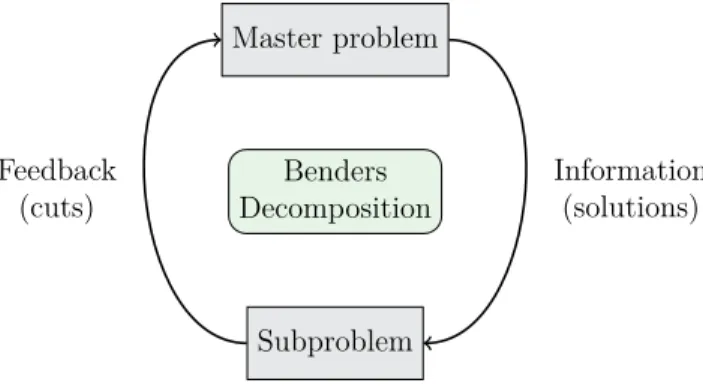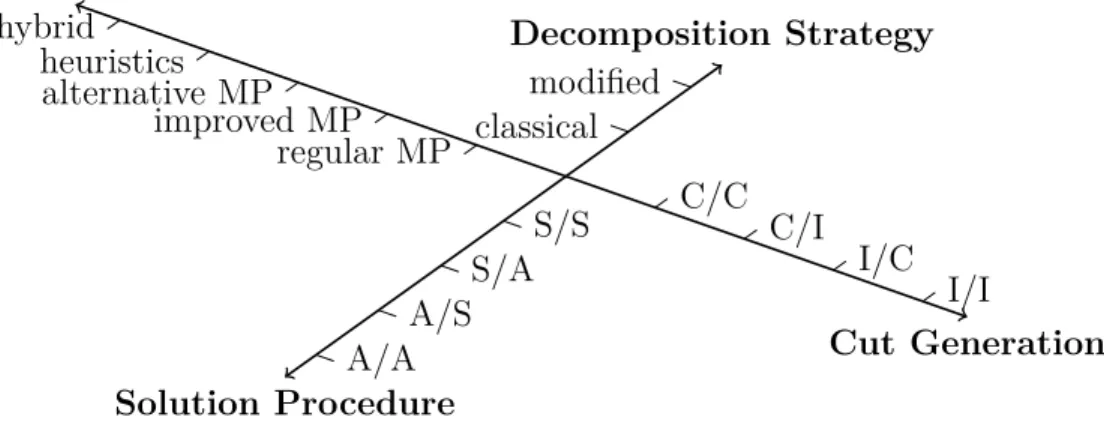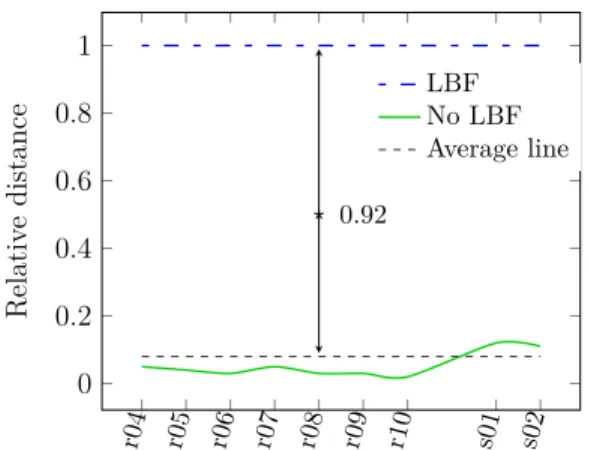On High-Performance Benders-Decomposition-Based Exact Methods with Application to Mixed-Integer and Stochastic Problems
Texte intégral
Figure




Documents relatifs
(2009) have studied multi-commodity capacitated network design and the strength of different Benders cuts; in Mar´ın & Jaramillo (2009) a multi-objective approach is solved
• Then, virtual capacities to be installed in the vir- tual layer define demands for another network de- sign problem, for the transport layer this time.. Though much easier to
To summarize, our computational experiments show that our stand-alone branch- and-cut algorithm is competitive with other branch-and-cut algorithms in the liter- ature, while
The classic version of the algorithm considers a relaxation of the Benders reformulation, called Master Problem (MP), with only a small subset of optimality and feasibility cuts..
In column “opt” we report a “*” if the instance is solved to proven optimality, in column “sec” we give the computational time, and for BLUE we also report the optimal
We propose a taxonomy of the enhancement and acceleration strategies based on the main components of the algorithm: the decomposition strategy, the strate- gies to handle the MP
Benders decomposition (Geoffrion 1970a,b) for stochastic programs relies on the applica- tion of three main steps: Projection of the model onto the subspace defined by the first
In essence, this strategy completely eliminates the need to generate feasibility cuts, in favor of a focused search for optimality cuts, which have a greater effect on improving





